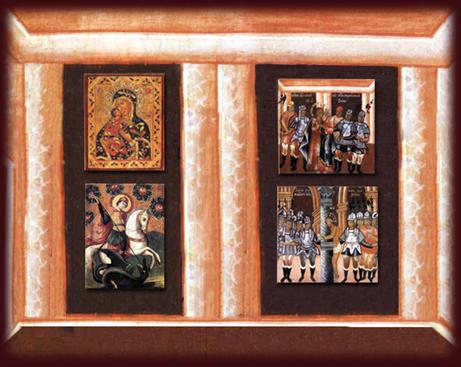Primitive in icon painting appears in the New time and borrows the iconographic elements and artistic language from Western religious art as well as the forms from the secular painting: portrait, landscape, genre. Primitive icon painters - sometimes highly-professional artists - could get in confusion since they tried to speak in an unknown language of a foreign culture. Moreover, since the second half of the XVIII century a typical provincial artist was a universally skilled person, who could work as a painter and an icon-painter all at once.
"Old Tikhon, - we read in M.E.Saltykov-Shchedrin's writings, - was serf-born and was employed as a "painter" at the house of the landowner Belenitsyn. Everything baring the traces of the oil paint in the village of Verkhovoe, starting with the "quasi-parquet" floor and ending with the portrait gallery of the masters, mistresses and their children as well as the iconostasis in the local church, - everything has been executed by Tikhon Kurzanov's hands. In that time the landowners liked to adorn their houses with art works so that in almost every manor house you could come across "Herodias", holding the head of John the Baptist on the plate, which the king Herod is trying to poke into, and "Susanna", laying naked with two old men at her sides and "A Girl with the Basin and a Pitcher of Water", and "Dining Fools", et al. Tikhon was very good in painting such pictures".
In both secular and religious paintings the artists like Tikhon Kurzanov managed to combine the icon- painting manner with the artistic methods borrowed from the European academic arsenal.
